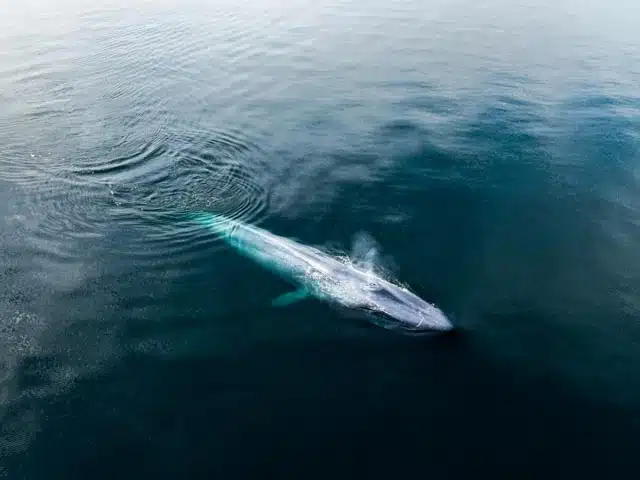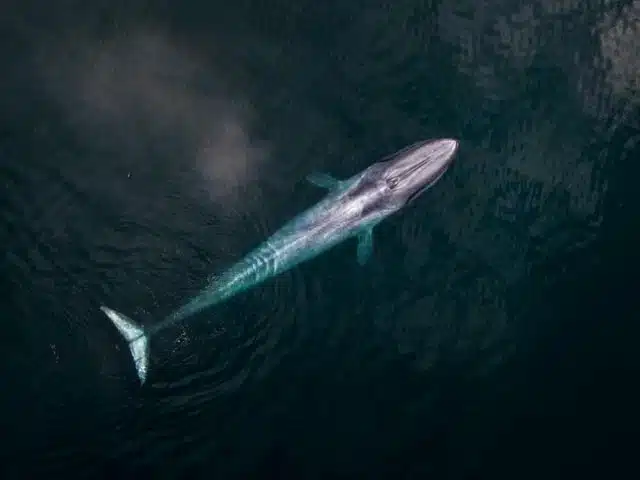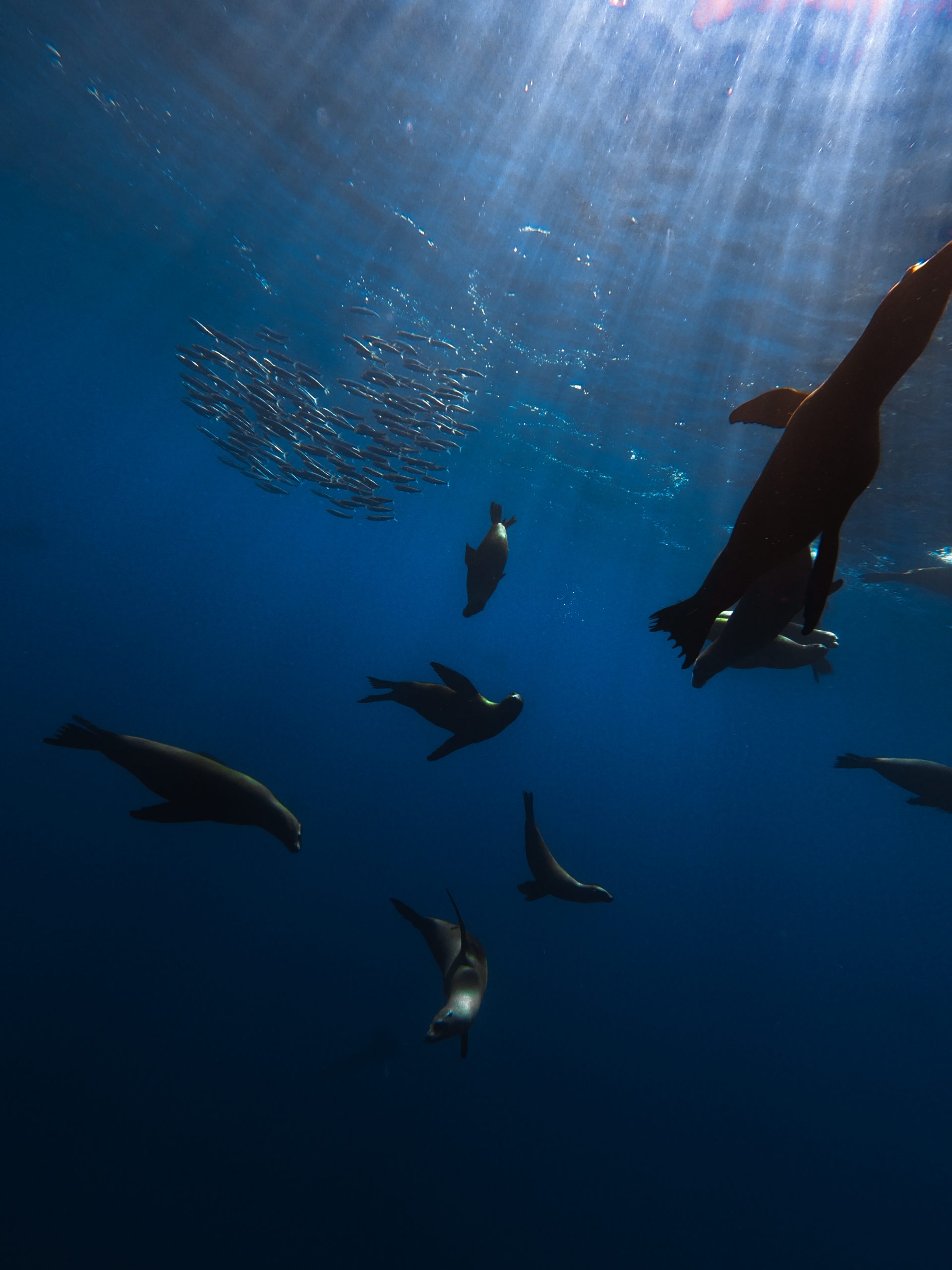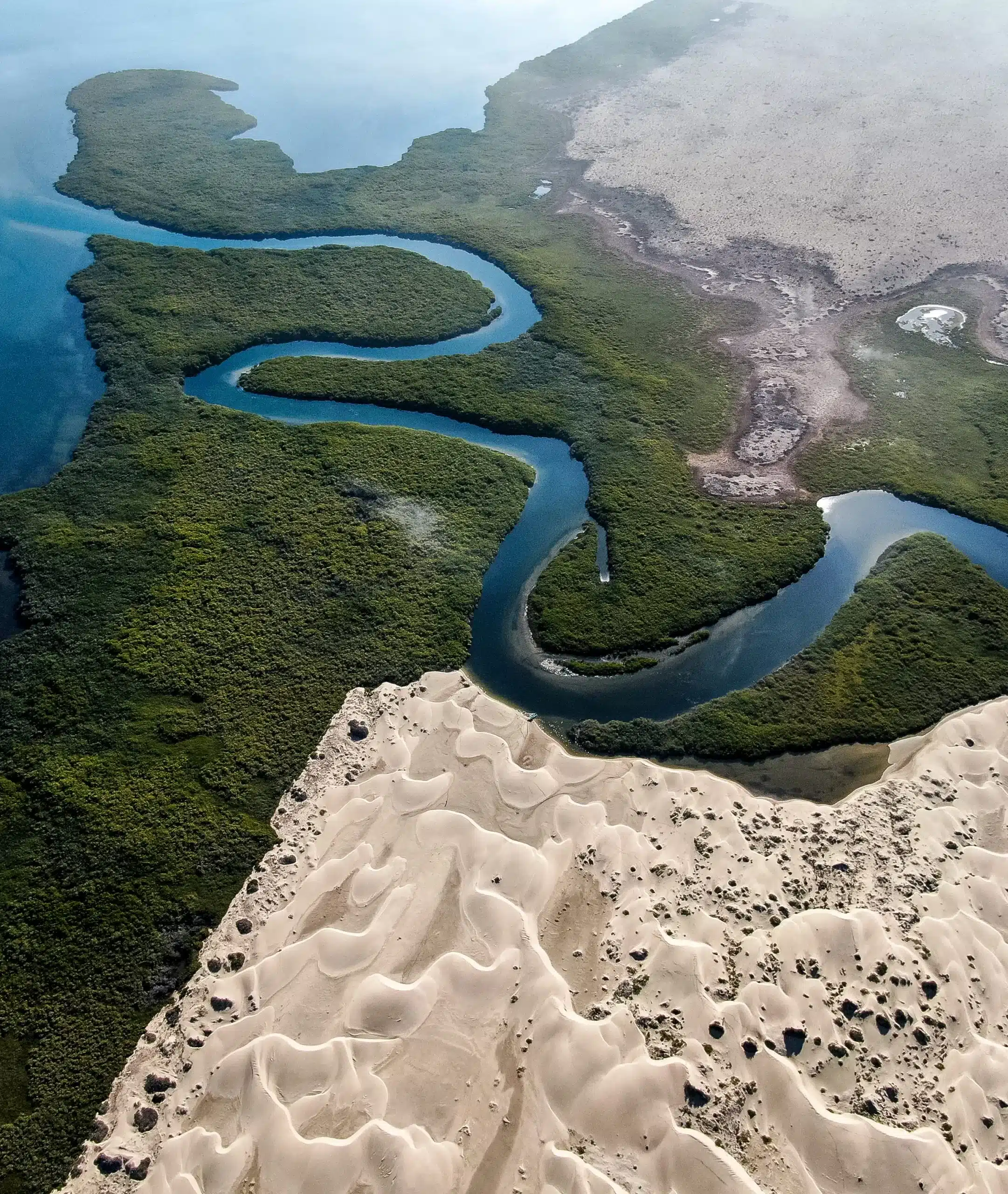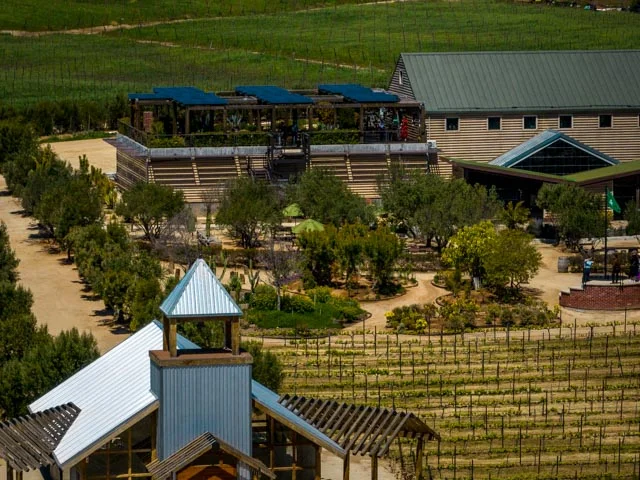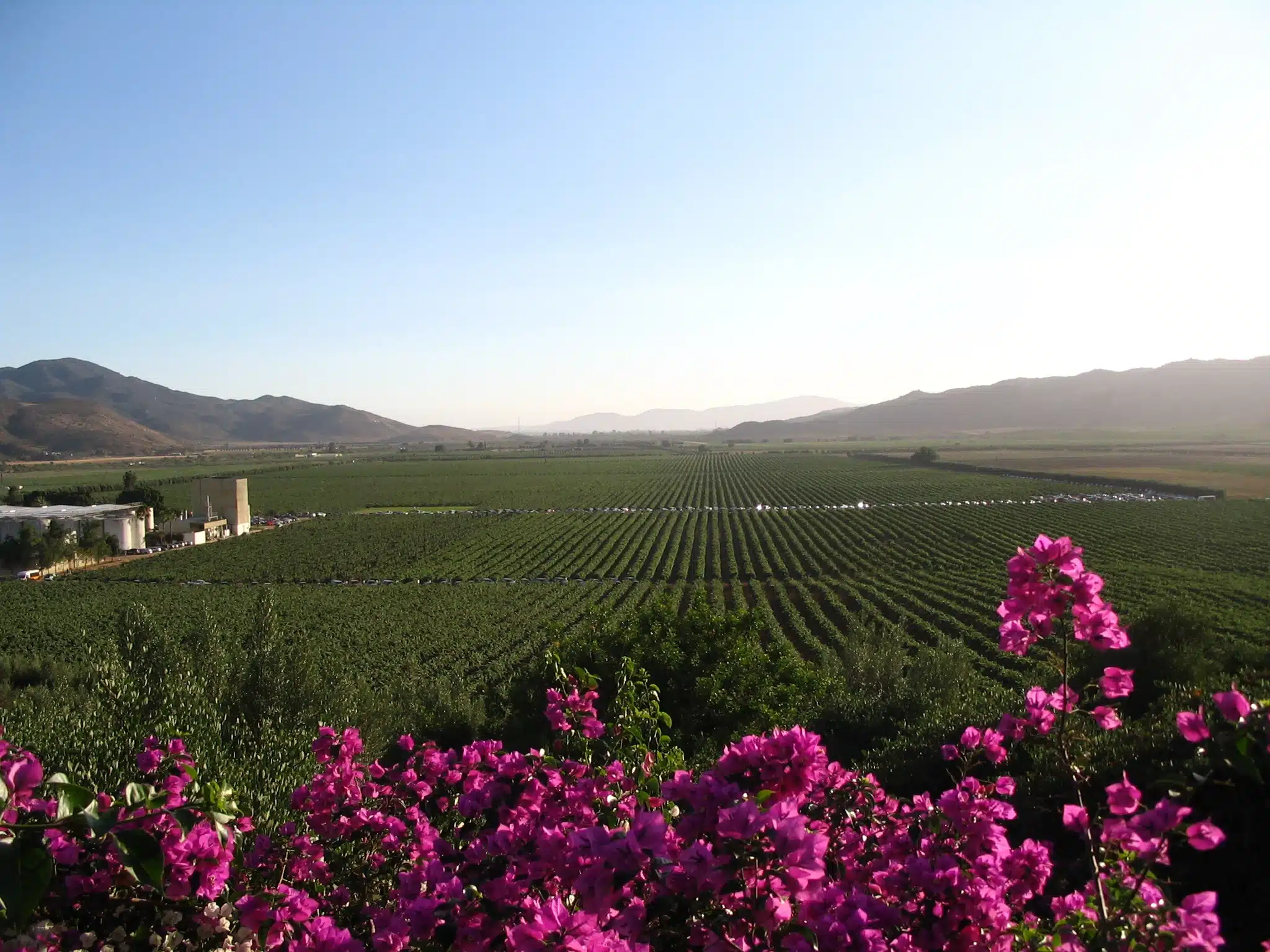Gray whales are renowned for undertaking one of the longest migrations of any mammal, traveling over 10,000 miles round-trip annually from the cold Arctic waters to the warm lagoons of Baja California Sur.
Historically, gray whales were heavily hunted during the 19th and early 20th centuries, bringing their population to the brink of extinction.
One of the most fascinating stories surrounding gray whales is the transformation of their relationship with humans. In the past, gray whales were hunted to near extinction in Baja’s protected waters, where they sought sanctuary to give birth. Known as “Devil’s Fish,” these whales were notoriously aggressive when hunters attempted to capture them—hence the origin of their ominous name. However, everything changed when a fisherman, Francisco “Pachico” Mayoral, had a life-changing encounter in San Ignacio Lagoon. A gray whale approached his boat and allowed him to touch it, marking the beginning of an unprecedented bond between humans and these gentle giants.
Today, the lagoons of Ojo de Liebre, San Ignacio, and Magdalena are the only places in the world where gray whales actively seek human interaction, creating one-of-a-kind experiences that attract visitors from around the globe.
Thanks to international conservation efforts and protective measures, gray whale populations have rebounded significantly, making them a true success story in marine preservation. Today, these resilient creatures symbolize the importance of protecting our oceans and the biodiversity within them.
If you’re fascinated by marine life and want to learn more about other whale species, don’t miss our blog on “Humpback Whales Fun Facts: Surprising Things You Didn’t Know About These Gentle Giants.”
BAJA CALIFORNIA’S SANCTUARY LAGOONS
Gray whales travel to Baja’s warm-water lagoons to breed, give birth, and nurse their calves. These lagoons serve as natural sanctuaries and are recognized as UNESCO World Heritage Sites due to their ecological significance. There are three major lagoons in the Baja Peninsula, each with its unique features:
Magdalena Bay: Known for its calm and protected waters, this lagoon is a prime spot for observing gray whale mothers and calves. It’s also a popular location for responsible ecotourism. Being the largest lagoon, it also has one of the largest mangrove forests in the peninsula, large extensions of sand dunes, and sandbars along the bay which hundreds of seabirds call home.
San Ignacio Lagoon: This remote lagoon is a critical breeding ground and offers some of the most intimate whale-watching experiences. Being the smallest lagoon, whales are concentrated in very small areas, which means there is a high probability of encountering them up close.
Ojo de Liebre Lagoon: As one of the largest gray whale nurseries in the world, Ojo de Liebre plays a vital role in the species’ lifecycle. Here, visitors can witness heartwarming moments between mothers and their calves. Also known as Scammon’s Lagoon, this pristine environment provides ideal conditions for mother whales to nurture their young. Among the three major gray whale breeding lagoons in Baja, Ojo de Liebre consistently hosts the largest number of whales. According to the latest census in 2022, around 1,000 gray whales were recorded in the area. However, in previous years, such as 2012, the census registered an astonishing 2,700 gray whales—the highest number recorded since monitoring began in 1996.
FUN FACTS ABOUT GRAY WHALES
Impressive Lifespan and Size
Gray whales live an average of 55 to 70 years, reaching lengths of up to 49 feet (15 meters) and weighing between 30 to 40 tons.
When it comes to size, males are generally smaller, measuring between 36 to 46 feet (11 to 14 meters), while females can grow up to 56 feet (17 meters), making them one of the largest baleen whale species. Their massive bodies are insulated by a thick layer of blubber, measuring up to 12 inches (30 cm) in thickness, which helps retain body heat in the cold Arctic and Baja California waters.
Unique Feeding Behavior
Unlike most whales, gray whales are bottom feeders. They primarily consume small crustaceans called amphipods by scooping up sediment from the ocean floor. This behavior leaves distinctive trails behind, which scientists often use to study their feeding habits.
Knuckled Backs
Gray whales lack a traditional dorsal fin. Instead, they have a series of knuckles or ridges along their backs, giving them a unique and easily recognizable silhouette.
Friendly Disposition
Known as “ballenas amigas” or “friendly whales,” gray whales are famous for their curious and playful nature. They often approach boats and interact with humans, creating unforgettable moments for those lucky enough to encounter them.
For an unparalleled experience, In Cabo Travel offers an exclusive airplane tour to Ojo de Liebre Lagoon, allowing you to witness these incredible encounters in just one unforgettable day. From the moment you take flight to the breathtaking sight of gray whales in their natural habitat, this adventure is nothing short of magical.
GRAY WHALE CALVES
Gray whale calves, often referred to as “friendly whales”, are born in the shallow, protected waters of Baja California after a 12 to 13-month gestation period. Newborns measure approximately 15 feet and weigh close to one ton at birth. These calves are unique in that they often interact with boats and humans, a behavior observed almost exclusively in Baja’s waters. Gray whale mothers produce high-fat milk, which enables their calves to gain up to 60 pounds per day. The young whales stay with their mothers for about six to eight months, nursing and building the strength necessary for the 10,000-mile migration back to the Arctic.
BOOK YOUR GRAY WHALE WATCHING ADVENTURE TODAY
Don’t miss the chance to experience the incredible migration and friendly nature of gray whales in Baja California Sur. Join our WHALE WATCHING tour and create lasting memories as you witness these gentle giants up close.
BOOK NOW and dive into the world of one of the ocean’s most remarkable species.






